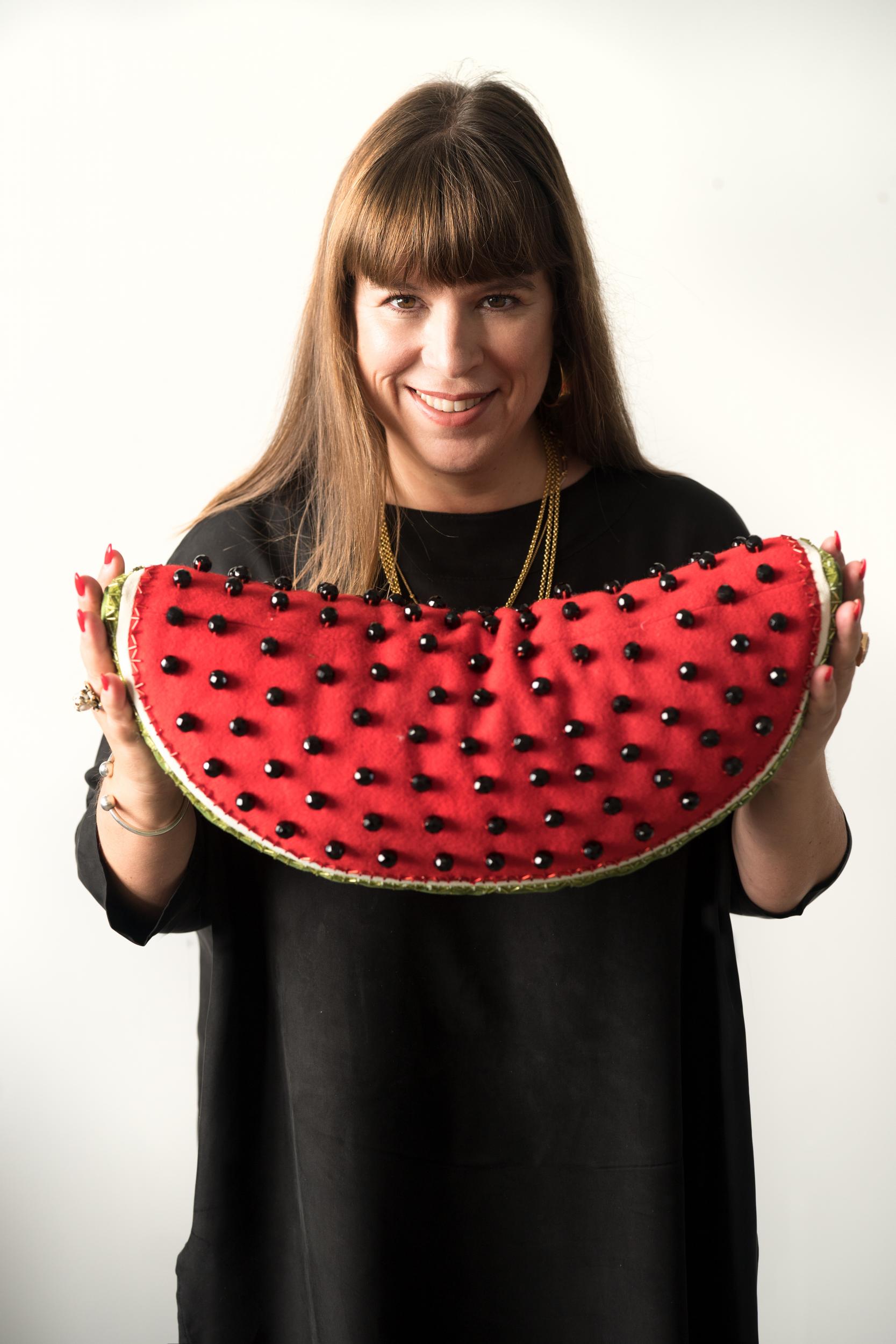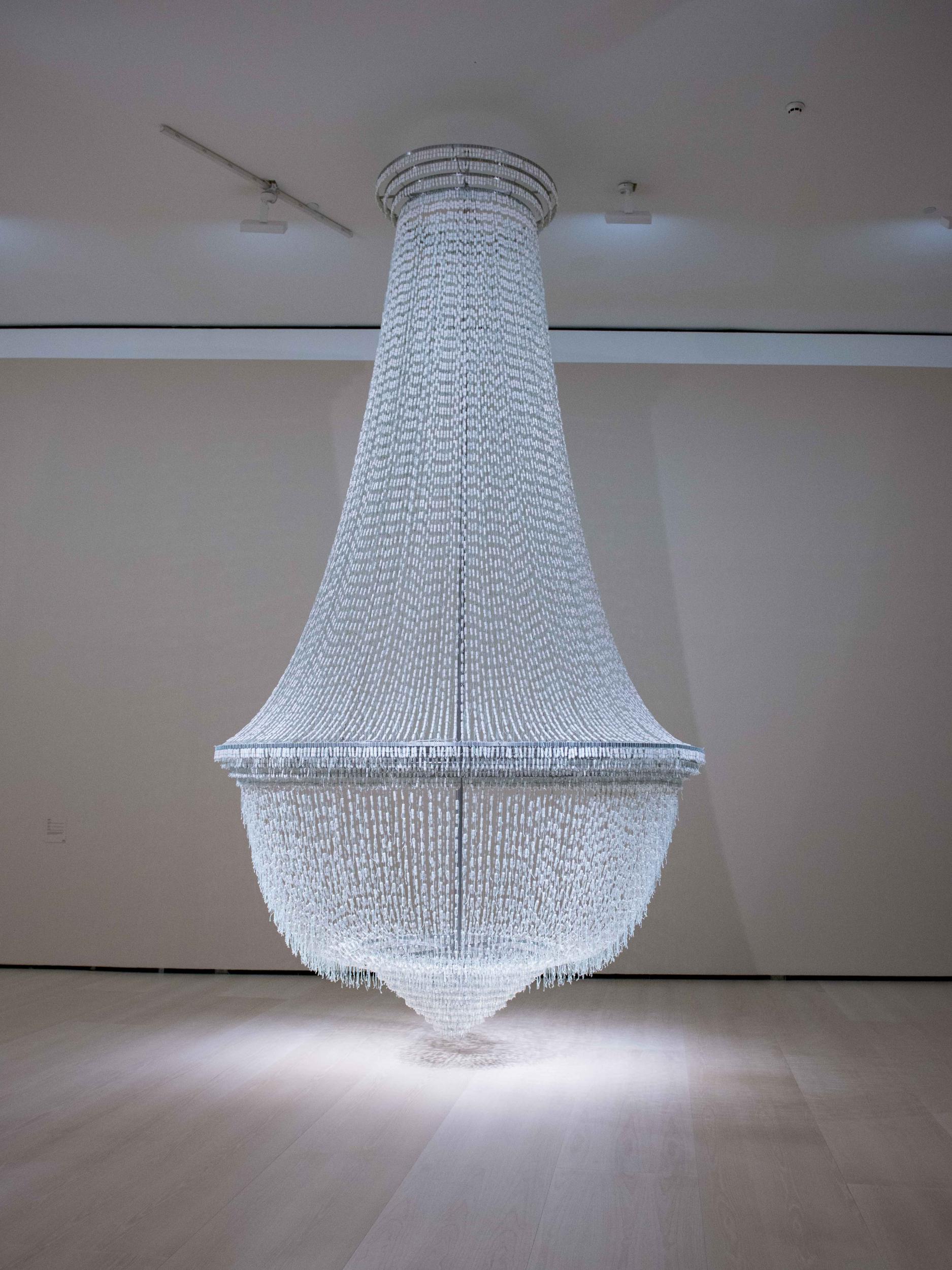Joana Vasconcelos holds up a mirror at the Guggenheim Bilbao
From stilettos made of pots and pans to chandeliers of tampons, the Portuguese artist's work has always explored notions of femininity

Your support helps us to tell the story
From reproductive rights to climate change to Big Tech, The Independent is on the ground when the story is developing. Whether it's investigating the financials of Elon Musk's pro-Trump PAC or producing our latest documentary, 'The A Word', which shines a light on the American women fighting for reproductive rights, we know how important it is to parse out the facts from the messaging.
At such a critical moment in US history, we need reporters on the ground. Your donation allows us to keep sending journalists to speak to both sides of the story.
The Independent is trusted by Americans across the entire political spectrum. And unlike many other quality news outlets, we choose not to lock Americans out of our reporting and analysis with paywalls. We believe quality journalism should be available to everyone, paid for by those who can afford it.
Your support makes all the difference.Joana Vasconcelos has been given the honour of a solo show at the Guggenheim Bilboa: the first Portuguese artist to do so.
Few could take on this museum and win: will she manage it, or be diminished by the challenging sculptural entity that she shows within?
People often stress the humour in Vasconcelos’ work, but for me the artist has moved between the majestic and the highly conceptual effortlessly, and powerfully, throughout her career. This exhibition, I’m Your Mirror, which is a mini-retrospective covering some 25 years in 30 works, allows the viewer to get a flavour of why she has received so many accolades.
I first discovered Vasconcelos’ work in Venice in 2005 where she was displaying her piece The Bride in – appropriately enough – the first Biennale in Venice to be curated by women. From afar it looked exactly like an opulent and beautiful chandelier; when one came closer, there was the startling realisation that the crystals had been replaced by tampons.

Following that, I saw one of her valkyries, a work that filled the glorious baroque Palazzo Grassi, one of a series of large-scale, ambitious textile sculptures, that spills throughout the whole building and down the staircase, grand, colourful and detailed.
I doubted whether any of her valkyries could be more striking than that but here in Bilbao a new work entitled Egeria – “the twenty-something Valkyrie” she’s made, she tells me – is certainly the biggest.
Made of a mixture of crochet, fabric, LED lights and steel cables, it is strung throughout the huge atrium of Bilbao. Greeting visitors as they pay for their tickets, feminine colours such as fuchsia pink drip with beads over their heads, moving towards stronger orange and blues as one enters the atrium.
Vasconcelos, along with her skilful, loyal team, have played with the space, mounting the valkyrie in all possible spaces including the lift shaft up to the third floor.

The artist explains that the valkyries were female warriors who travelled over the battlefields picking up dead warriors and ascending with them, so it is appropriate that Egeria is paler towards the top. Unlike others, this has a large central body – there is a weightiness and power here too.
I mention her team because she runs a medium size factory in Lisbon, depending on an array of craftspeople, engineers and architects to fulfil her increasingly large projects.
Vasconcelos has told me that she frequently receives calls from museum directors – usually female – to tackle the huge empty atrium space that an architect – usually male – has left them to deal with.
Steel is the realm of the male sculptor and Richard Serra, with his torqued ellipses, dealt with the scale and power of the sculptural space in this same venue. By contrast, Vasconcelos has used cloth and crochet, traditionally the realm of the woman, to fill this lofty void.

I ask about her another new work on display at the Guggenheim, I’ll Be Your Mirror – a giant Venetian carnival mask made of mirrors. Where did they come from?
“They are from my design, made for me, and are a mixture of the baroque and the ordinary, what we would have in our homes,” she explains.
The baroque is important in Portugal so it is appropriate that this facet enters into the work. As with much of Vasconcelos’ work, this piece is about transformation: the ordinary mirror here in its profusion takes on a new shape and reflects both the viewer and also other works in the exhibition.
Other works such as Marilyn, from 2011: a pair of suprasize stiletto shoes that on closer inspection are composed of pots and pans. With this work Vasconcelos makes us think of why we wear these painful shoes – to make ourselves more attractive to the opposite sex, for whom we also use those pots and pans to make their food with (and must wash up).

Burka, 2002, a work that curator Petra Joos admits to me is her favourite in the exhibition, is about how woman are forced to conceal their identity by donning a burka. Vasconcelos asked her father, then a war photographer, to bring her a burka from Afghanistan; when she donned it she realised how woman as a whole hide their identities through necessity.
Here a crane raises a figure up to the full height of the space. Falling from the top of its trajectory, it makes a frightening crashing sound as it collapses into a colourful circle of skirts, topped by the burka.
Many of Vasconcelos’ works rely on sound and another of the more powerful works in the show, Call Center (2014-2016), is a giant gun – a berretta, “the same gun James Bond used” – made of 168 analogue telephones. The cacophony of its soundtrack was composed by her Portuguese collaborator Jonas Runa.
This exhibition also features a menagerie of crochet covered beasties. Vasconcelos has long collected the fantastical faience sculptures by Portuguese ceramicist Rafael Bordalo Pinheiro: “We all had them at home.” But here she has transformed them by encasing them in crochet hand made in the studio.

When I talk to Vasconcelos in Bilbao, she tells me how making new works teaches her more about herself.
In one of her more personal pieces www.fatimashop, the artist set out to discover the shrine of Fatima, choosing to make the pilgrimage to the Portuguese town of the same name (a conceptual work in itself), getting collaborators to video her progress.
She chose a vehicle used in Portugal to bring vegetables to market – a three-wheel slow moving mini truck – and her team, small in those days, filmed her slow journey. At one point there was a 2km tailback behind her and she was afraid she would be killed as the truck behind her was so desperate to pass.
The soundtrack that accompanies the video of her gum-chewing passage is humorous, the Pink Panther theme tune matching the mood of the day. When the truck driver finally passes there is a true release of tension – although he almost wipes out a cyclist going only slightly slower than her truck...
The original vehicle’s back doors are open here in Bilbao, displaying the phosphorescent souvenir sculptures of Fatima, which most pilgrims take home from their pilgrimage. This striking work has led directly to the recent commission of a sculpture to honour the arrival of the Pope to Portugal in 2017.
At this year’s revitalised Royal Academy Summer Exhibition, if you were judging quality simply by the number of people photographing works or marvelling at them, a clear winner would be the Imperial Valkyrie by Vasconcelos, so strikingly installed in the octagon gallery at the exhibition’s centre.
Its unapologetic opulence made it a good fit for Versaille where it was first shown – Vasconcelos was also the first female given the honour of installing her work within its walls and grounds. Ironically, they rejected showing The Bride shown in Bilbao saying those tampons made it just too personal for them to show. Luckily, Petra Joos is not ashamed to exhibit this powerful, seminal piece.
I’m Your Mirror is a triumph from start to finish. For the casual visitor there is the wonderful valkyrie that bisects the atrium spaces, playing games with the building, its striking pendulous orange penile form strong against the travertine marble of the space.
Moving into the exhibition, past the Red Independent Heart twirling slowly accompanied by fado music, it might be easy to miss how it is constructed by individual pieces of plastic cutlery, each painstakingly bent by hand. The new works fit seamlessly into the exhibition, simultaneously exploring what it is to be a woman and how both determination and humour are all necessary to succeed.
I’m Your Mirror is at the Guggenheim Bilbao until 11 November (guggenheim-bilbao.eus)
Join our commenting forum
Join thought-provoking conversations, follow other Independent readers and see their replies
Comments